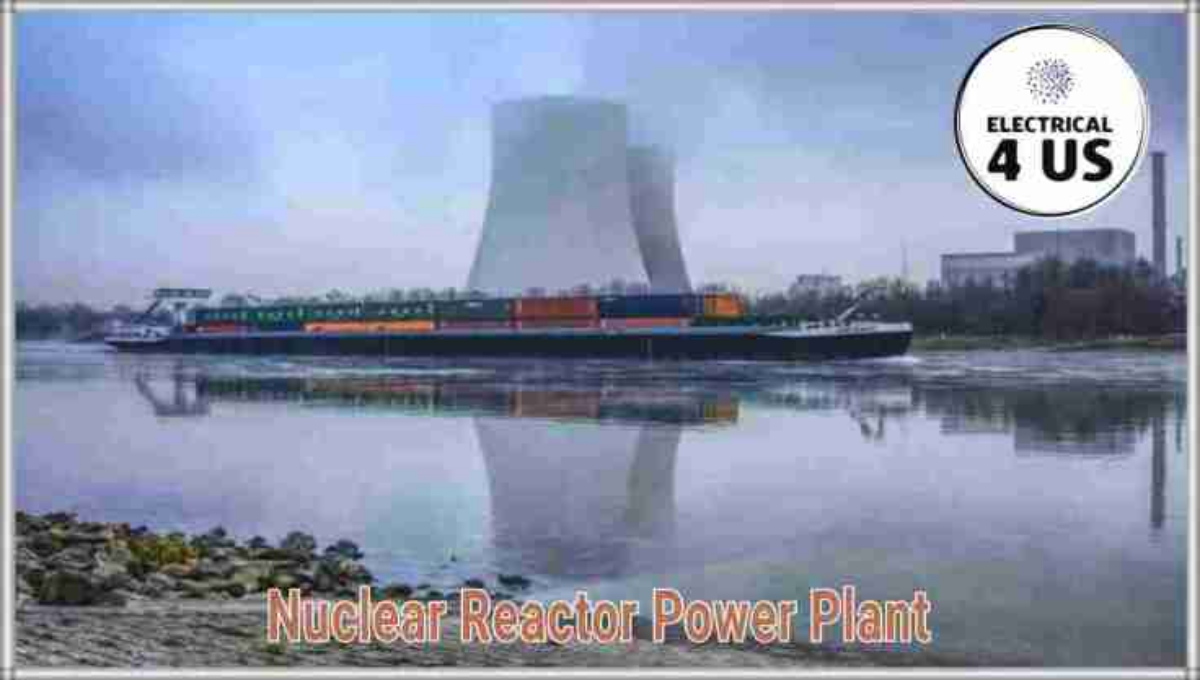Calculator
- Home
- Transformers
- _What is Transformers?
- _Top 10 Transformers In India
- Electrical genrating Plants
- _Hydro Power Plant
- _Biomass Power Plant
- _CHP Plant
- _Fossil Fuel Plant
- _Thermal Power Plant
- _Solar Power Plant
- Generator
- _Top 10 generator
- _Genrator Price
- _DC Generator
- Invention & Laws
- _Light Bulb Invention
- _Faraday's Law of Induction
- _Faraday's Law of Electrolysis
- _Fleming Right hand rule
- _Joule's Law of Heating
- _Ohm's Law of Conduter
- _Lenz's Law of electromagnet
How is electricity produced in a nuclear power plant?
Nuclear Power Plant
Electricity is also produced through the nuclear power Plant. In this, uranium and graphite rods are used as fuel. A steam is produced when the fuel burns. The turbine rotates through that steam and also the alternator. And the electricity generated in this way is carried through wires into electric panels, then the power is sent forward. To generate power from a nuclear system is done in four actions which are as follows.
- Nuclear Reactor
- Heat Exchanger
- Steam Turbine
- Alternator
Nuclear Reactor
The nuclear reactor, which is the main part of this process, produces a heat by combating rods of uranium and graphite. The heat generated is sent for further action. And thus heat is produced in the nuclear reactor.
Heat Exchanger
When heat is produced from the nuclear reactor, it then enters the heat exchanger. Here, heat comes in contact with water. The water then turns to steam. And the heat reaches the nuclear reactor via pump and filter again. This whole process is called heat exchanger.

Steam Turbine
The steam produced by the heat exchanger process reaches the turbine via a valve. So she starts rotating the turbine. And the steam goes through here to the condenser, in the condenser, it turns into water from steam and this water cools by going to the cooling tower and some water goes into the heat exchanger through the feed water pump. There is an exit gate between the cooling tower and the condenser from where waste water is pumped out.
Alternator
The function of an alternator in a nuclear reactor is to generate electricity. When the alternator feeds from the turbine, it starts rotating. And electricity is generated. And the power generated is sent forward to be spent through the transformer.
Most Popular
Categories
- 10 kVA Stabilizer (1)
- Alternator (3)
- Ampear (1)
- Armature (1)
- Battery (1)
- Biogas (1)
- Biomass (1)
- Boiler (1)
- Bulb Thomas Alva Edison (1)
- Capacitors (1)
- Cogeneration (2)
- Conductor (1)
- Contractor (1)
- Crankshaft (1)
- DC Generator (1)
- Diesel Generator (2)
- Diodes (1)
- Earthing (1)
- Electric Meter (1)
- ElectricIan Tools (1)
- Electricity generation (1)
- Electricity Saving Tips (1)
- Electrolysis (1)
- Electromotive force (1)
- Electron (1)
- EMF (1)
- Faraday's law (2)
- Fleming rules (1)
- Fossil Fuel (1)
- Fuse (1)
- Generator (2)
- Heater (1)
- Hydropower (1)
- Ic (1)
- Incandescent Bulb's Law (1)
- Inverter (1)
- Joule's Law of Heating (1)
- Kirchoff current law (1)
- Kirchoff Voltage Law (1)
- Kirloskar Generator (1)
- Lenz law (1)
- Lighting Arrester (1)
- Magnetic Field (1)
- MCB (2)
- Motor (1)
- Multimeter AC and DC Measuring tools (1)
- Nuclear Power plant (1)
- Ohm's Law (1)
- Power Factor (1)
- RCB (1)
- RCBO (1)
- RCCB (1)
- Rectifier (1)
- Relay (1)
- Resistor (1)
- Resistor in series Resistor in parallel Resistor formula Resistor calculator Resistor problem (1)
- Servo Stabilizer (1)
- Short circuit Circuit breaker (1)
- Solar Energy (1)
- Star delta (1)
- Thermal Power (1)
- Tidal waves Power (1)
- TOP 10 Cable (1)
- Transformer (2)
- Turbine (1)
- Windmill (1)
Popular Post
Labels
- 10 kVA Stabilizer
- Alternator
- Ampear
- Armature
- Battery
- Biogas
- Biomass
- Boiler
- Bulb Thomas Alva Edison
- Capacitors
- Cogeneration
- Conductor
- Contractor
- Crankshaft
- DC Generator
- Diesel Generator
- Diodes
- Earthing
- Electric Meter
- ElectricIan Tools
- Electricity generation
- Electricity Saving Tips
- Electrolysis
- Electromotive force
- Electron
- EMF
- Faraday's law
- Fleming rules
- Fossil Fuel
- Fuse
- Generator
- Heater
- Hydropower
- Ic
- Incandescent Bulb's Law
- Inverter
- Joule's Law of Heating
- Kirchoff current law
- Kirchoff Voltage Law
- Kirloskar Generator
- Lenz law
- Lighting Arrester
- Magnetic Field
- MCB
- Motor
- Multimeter AC and DC Measuring tools
- Nuclear Power plant
- Ohm's Law
- Power Factor
- RCB
- RCBO
- RCCB
- Rectifier
- Relay
- Resistor
- Resistor in series Resistor in parallel Resistor formula Resistor calculator Resistor problem
- Servo Stabilizer
- Short circuit Circuit breaker
- Solar Energy
- Star delta
- Thermal Power
- Tidal waves Power
- TOP 10 Cable
- Transformer
- Turbine
- Windmill





0 Comments